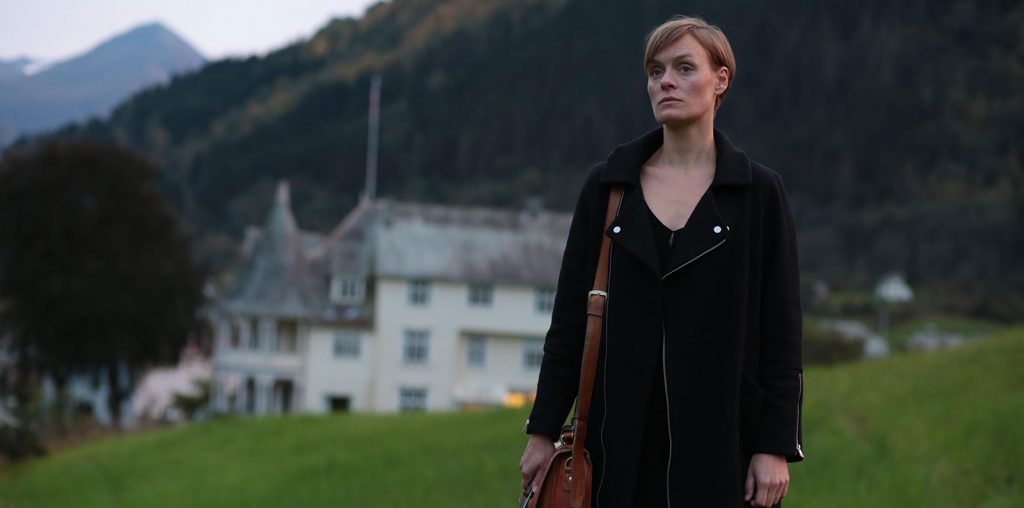
This ambitious short work mixes images from a family celebration of the Passover Seder with an interview with the filmmaker’s aunt, in which she recounts the harrowing story of how she and 13 other Jews survived the Holocaust by hiding out in a tiny room. Also in the visual mix is footage from WWII era newsreels, as well as general images from contemporary television and WWII films. There are occasional floating subtitles which pose questions about the limits of our ability to understand and interpret history (“Is the distance to (sic) great for me to understand?” “Which are the real stories?”) The soundtrack, parallel to the images, is a collage of sounds from the Seder, the interview with the aunt, and sound from the media clips.
DeLevie wrote to me that for him, the center of the film is his “questioning of television, film and the Internet and how they currently function as the primary envoys for word, image and sound in the modern world.” However, for me, the most powerful and central aspects of the film are the depiction of the Seder and his aunt’s story.
As a person who has been to quite a few different Seders with different families, I would say that DeLevie’s family has an unusual Seder in that it really is exactly what a Seder should be. Their Seder is a lively intellectual and emotional gathering in which all generations are full participants. Humor, pathos, serious discussion and inquiry, and reminiscence are all part of the experience. From the looks on the faces of the participants, all members of the family appear to be actively engaged in a ritual activity that stimulates thought and feeling equally, while connecting them to a living tradition which has its origin in ancient times. They are relaxed and confident enough to seem cheerfully unconcerned with being videotaped (most of the time). The feeling of warmth and unity when they join hands around the table to sing together is remarkable.
The Seder, like the contemporary media which DeLevie is questioning, is a technology for remembering and interpreting history. Like postmodern art and media, the Seder is patched together from a variety of sources, and is a collage of text, performed actions, and music. Although the technological means have changed, perhaps the postmodern way of processing history is not as new as it seems.
The aunt’s story of her ordeal is gripping and moving, as are many
Holocaust narratives when they are told simply and honestly, as this one is.
The inclusion of the Holocaust newsreel footage serves to remind the viewer that the Holocaust is the inescapable subtext of all postwar Seders (a ritual in which Jews recount the slavery and exodus from Egypt.) The modern oppression of Palestinians by Israelis, however, seems quite escapable, at least for this filmmaker. The inclusion of references to television and popular media serves to remind the viewer that, for the current generation, knowledge of the Holocaust is necessarily second-hand and mediated through other eyes.
DeLevie’s attempt to raise questions about the possibility of knowing the truth, through the inclusion of subtitles, is a device which I find the least interesting and convincing part of the film. DeLevie, typical of postwar, middle-class American Jews, worries that it would be impossible for him to understand what it was like to be hunted like an animal and have to spend years hiding in a hole. (After a description of his aunt’s ordeal, the title reads “There is no equivalence.”) I would have been more interested, once DeLevie acknowledged that bridging the gap to the past is impossible, in seeing him make a superhuman effort and try to achieve it anyway, just to see where the attempt would take him. As writer Harold Brodkey noted, once an artist decides that a certain act of the imagination is impossible, that realization often becomes the gateway to making it possible. In any case, the fashionable media theory embodied in the subtitles did not strike me as having the same authenticity or power as the footage of the Seder and of the aunt’s story.
DeLevie’s visual collage technique functions as the standard shorthand it has become to evoke the information overload/multitasking state of consciousness of postmodern life. Unfortunately, he often piles on excess visual effects which have no expressive purpose, and his collage technique lacks basic visual skills as well as any sense of personal style.
Despite these weaknesses, “Haggadah” has a strong impact, mainly because of the strength of DeLevie’s portrait of his family Seder as well as his aunt’s story.

